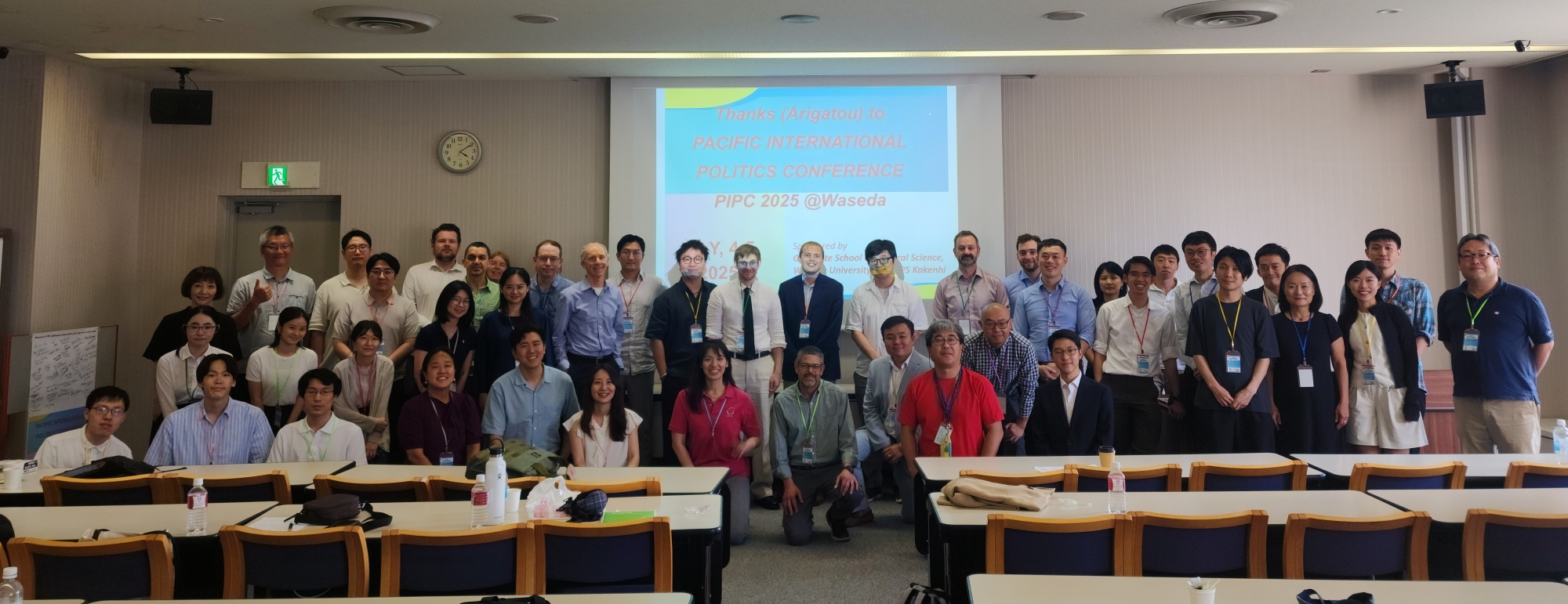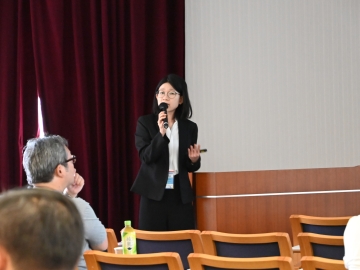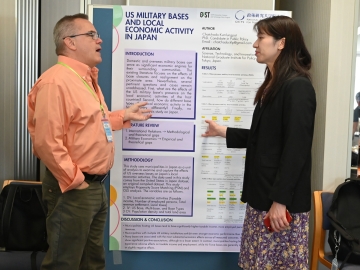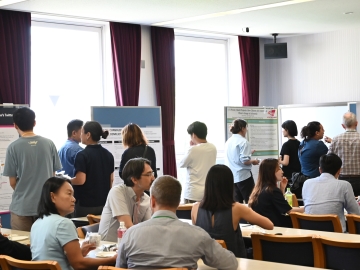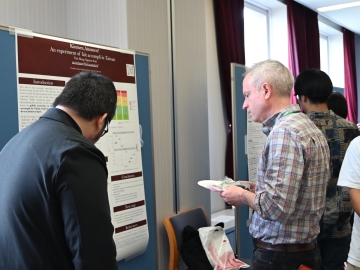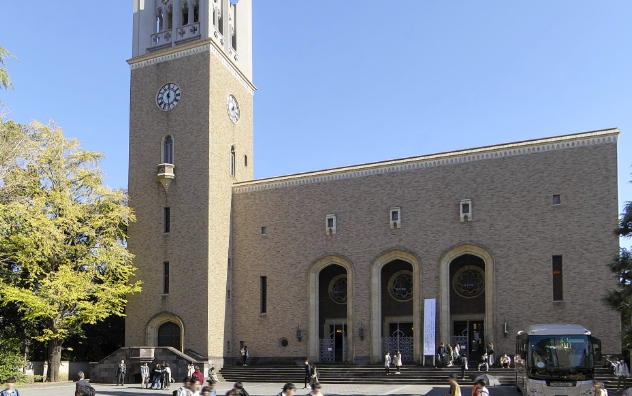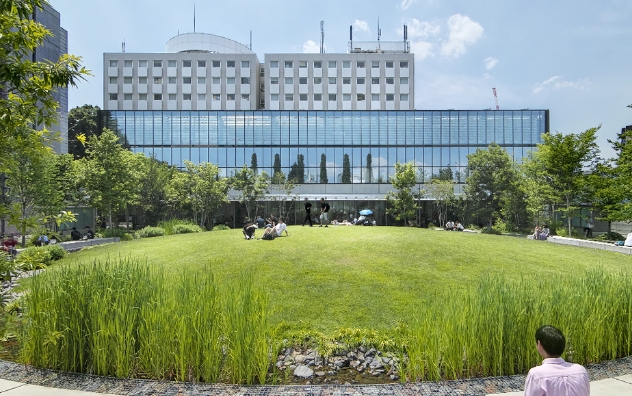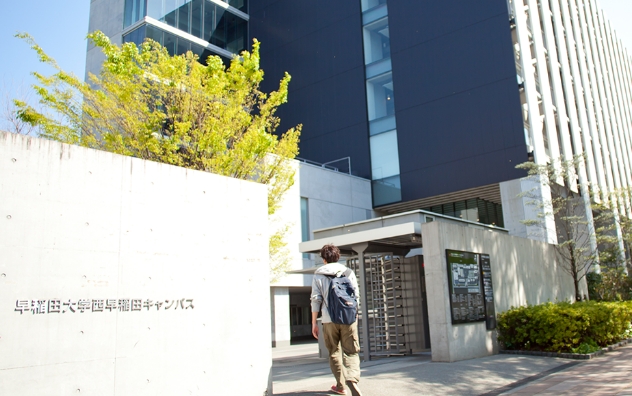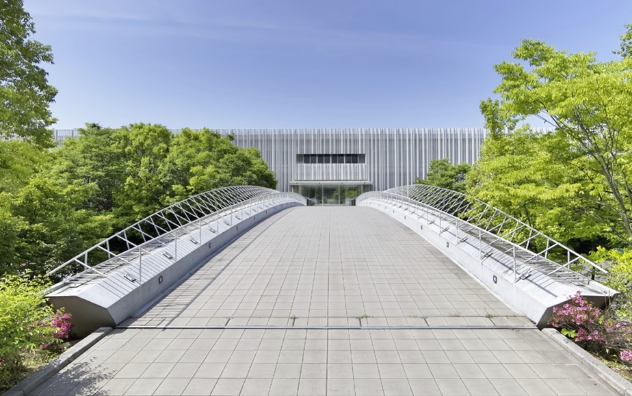International Relations in 2025: A Rundown from the PIPC Conference at Waseda
Thu, Jul 24, 2025-
Tags
Global tensions aren’t slowing down, but neither are the scholars trying to make sense of them. Last July 4th to 5th, over seventy International Relations (IR) scholars gathered at Waseda University for the seventh Pacific International Politics Conference (PIPC), a collaborative forum dedicated to IR and its subfields, concentrating on the Asia-Pacific region.
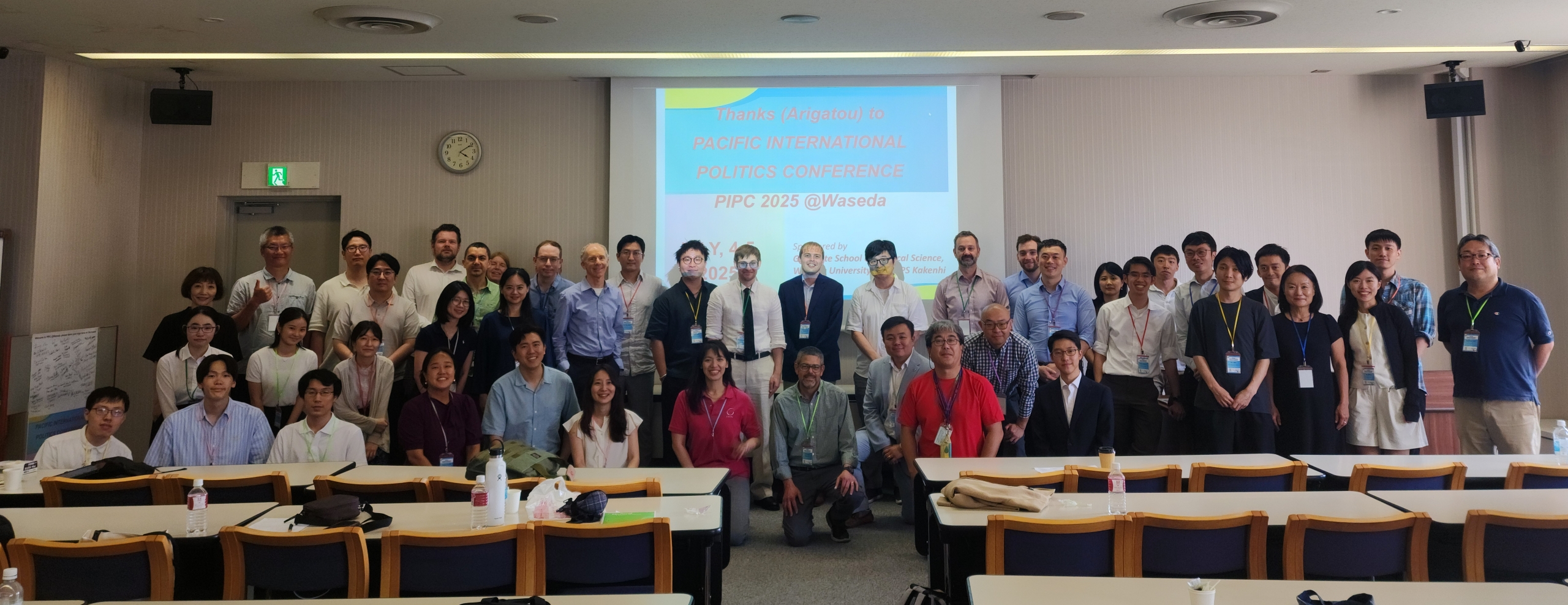
A group photo
Drawing participants from across Asia, Europe, and North America, the 2025 conference took on some of the most urgent political challenges of our era: rising geopolitical rivalries, fragile alliances, regional conflicts, and the shifting rules of international engagement. Scholars from institutions such as the Academia Sinica, University of Hong Kong, University of Macau, Korea University, Australian National University, and the University of British Columbia contributed insights from a wide range of disciplines, including political science, history, economics, and Southeast Asian studies, among others, highlighting the conference’s deep international reach and commitment to interdisciplinary dialogue. And while the perspectives varied, one thing was clear: international relations affect all of us, making these conversations more relevant and necessary than ever.
Day One: Global Conflict and Strategic Alliances
PIPC 2025 opened at Waseda’s International Conference Center with a sharp reminder of the world’s unpredictability. During his opening remarks, our very own Professor Atsushi Tago joked about the viral manga Watashi ga Mita Mirai (The Future I Saw) by Ryo Tatsuki, which had predicted a major earthquake on July 5, coincidentally the second day of the conference. The timing earned some laughs from the audience and set a slightly surreal tone for what would become a day of serious global analysis.

Professor Tago welcoming everyone
Things only got more interesting once the panels started. Across both Day One and Day Two, each presentation was capped at 10 to 12 minutes, allowing up to 20 minutes for discussion afterward. The discussions that followed were often the most compelling part, taking the initial ideas in new directions and opening up broader conversations about theory, methods, and regional contexts. The exchange became a kind of collaborative exercise, with senior academics working together to sharpen each other’s ideas and ultimately contribute to the advancement of the field of international relations.
- Dr. Tomoko Takahashi
- Dr. Christina Davis
- Dr. Jesslene Lee
Day One of the event launched into its first set of parallel panels. Panel 1, tackling international conflicts, was chaired by Dr. Xiaojun Li. It opened with Benjamin E. Goldsmith (Australian National University), who examined affective responses to territorial threats in IR. Next, Professor Tago himself presented experimental findings on crisis deflation in territorial disputes in Japan. Osman Sabri Kiratli (Waseda University) closed the panel with research on American public attitudes toward corrective security measures. Meanwhile, Panel 2, chaired by Dr. Koji Kagotani, focused on trade and international organizations. It began with Jesslene Lee (University of Toronto) analyzing the regime complexity of preferential trade agreements in intellectual property rights. Christina Davis (Harvard University) followed with a study on World Trade Organization (WTO) rulings, export restrictions, and supply chain confidence, and Tomoko Takahashi (Kyoto University) concluded with insights into bilateral trade effects among major powers within the WTO.
- Scenes from the poster session
The afternoon shifted gears with a poster session. Over lunch, attendees walked around, talked with presenters, and took in research being done by students on various topics: China’s Twitter diplomacy, U.S. alliance commitments, missionary legacies and gender development, and regional peacekeeping effectiveness. The atmosphere was informal, but the discussions were sharp.
After some well-earned food and face-to-face conversation, it was back to business—this time with a strong slate of panels tackling conflict, economics, and emerging actors in IR. Panel 3, chaired by Dr. Phillip Lipscy, picked up the thread from the morning sessions. Koji Kagotani (Chuo University) explored how internal instability can heighten interstate tensions. Kai Quek (University of Hong Kong) followed with a presentation on how costly signals are perceived in mutual, strategic interactions, and Kiyoung Chang (Kyonggi University) closed the panel with a deep dive into domestic audience responses to war-related decisions and electoral accountability.
Happening simultaneously, Panel 4 on International Political Economy, chaired by Dr. Layna Mosley, offered a different lens—one centered on markets, trade, and the shifting logic of global capital. Mark Manger (University of Toronto) examined the dynamics of sovereign debt and default. Kee Hyun Park (Arizona State University) addressed how firms demand protection under global value chains, and Jack Zhang (University of Kansas) questioned what “foreign” really means in the context of foreign direct investment in China.
Foreign policy conversations on Panel 5, which was chaired by Dr. Michael Tomz, followed. Wen-Chin Wu (Academia Sinica) kicked things off with a study on how Chinese tariffs are shaping Australian public opinion. Wilfred M. Chow (University of Nottingham Ningbo China) introduced the idea of the “Goldilocks Paradox” in getting external support and the prevention-deterrence dilemma. Hsin-Hsin Pan (Soochow University) wrapped up the session with experimental evidence on how U.S.–Taiwan–China tensions influence public support for transactional diplomacy.
Meanwhile, Panel 6, chaired by Dr. Soo Yeon Kim, focused on non-state actors in IR. It began with Jonathan Chu (National University of Singapore), who looked at how subnational governments engage in IR. Timothy Cichanowicz (University of Kansas) presented research on how Japanese multinational firms respond to political risks in China, and the session concluded with Layna Mosley (Princeton University) analyzing how investors react to new sovereign debt obligations.
As the day wound down, participants regrouped for one final set of panels before the evening reception. Panel 7 on Nuclear Issues, chaired by Dr. Erik Gartzke, brought the focus to nuclear strategy and norms. Kyungwon Suh (Australian National University) opened with a cross-national conjoint analysis exploring the conditions under which nuclear brinkmanship is perceived as effective. Following that, Hwalmin Jin (Chonnam National University) returned with a second paper that introduced a latent measurement model to assess the strength of the global norm against nuclear use.
Simultaneously, Panel 8, chaired by Dr. Shuhei Kurizaki, tackled topics related to war legacies and secessionist politics. Gaku Ito (Osaka Metropolitan University) examined the lingering impact of wartime violence in Vietnam, particularly how it shapes attitudes across generations. Closing the panel, Ryan Griffiths (Syracuse University) presented research on how prior experiences with statehood affect contemporary movements for secession.
As the sun set on Day One, participants gathered for dinner and a quick presentation by Professor Atsushi Tago, who introduced his latest book, Introduction to International Relations.
Day Two: Big Questions, Fresh Angles
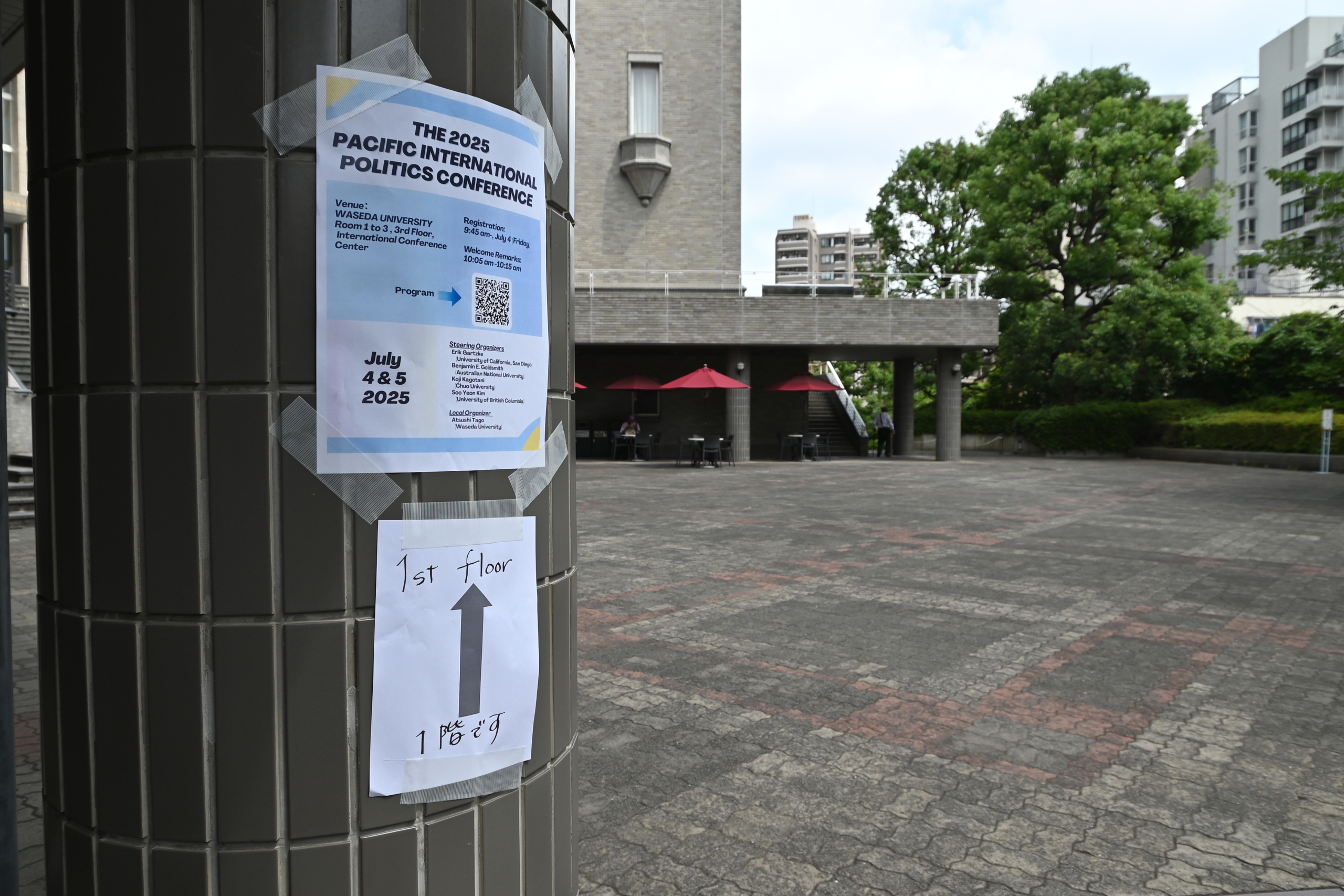
A sign guiding attendees to the International Conference Center
Day Two launched into a mix of fresh energy and heavier themes. Despite the lingering memory of the manga-predicted megaquake (which thankfully didn’t happen), the focus returned to research. The morning opened with Panel 9, chaired by Dr. Gaku Ito, and presentations of research focusing on text analysis in IR. Michael Masterson (Missouri State University) examined how Chinese regime-affiliated commentators manufacture nationalism online. Next, Jean Hong (University of Michigan) presented research on media coverage of China. Ryan Wang (Louisiana State University) closed the session with a paper on how Russia’s actions today influence narratives on the Chinese platform Weibo.
Meanwhile, Panel 10, chaired by Dr. Mark Manger, focused on environmental issues. Anil Menon (University of California, Merced), Iain Osgood (University of Michigan), and Nicole Wu (University of Hong Kong) unpacked how nationalism shapes industrial policy in the U.S. amid its competition against China. Then, Charles Miller (Australian National University) presented a historical deep dive into climate cycles and conflict patterns in India between 1080 and 1906 CE.
After a lively morning, attendees split between two diverse midday sessions. Panel 11, chaired by Dr. Wen-Chin Wu, tackled various issues in IR. It kicked off with Jiyoung Ko (Korea University) and Jonathan Chu (National University of Singapore), who explored nationalist backlash to the K-Wave. Dov Levin (University of Hong Kong) followed with a study on public diplomacy through low-cost gifts, like panda loans, and whether they actually work. Sebastian Leue (Helmut Schmidt University Hamburg) closed the panel with their findings on sea rescue policies and their effect on irregular migration.
Panel 12, chaired by Dr. Sawa Omori, took a deeper dive into international institutions. Phillip Lipscy (University of Toronto & University of Tokyo) discussed how to quantify the influence of nations in the global order. Soo Yeon Kim (University of British Columbia) presented their work on how the Asian Infrastructure Investment Bank (AIIB) is perceived in IR. Rounding out the session, Azusa Katagiri (Osaka University) examined the symbolic and strategic impact of leaders attending G20 summits.
The final stretch brought attendees back for a strong closing lineup. Panel 13, chaired by Dr. Benjamin E. Goldsmith, tackled some of the most layered questions in security and public opinion. Erik Gartzke and Evan Mann (University of California, San Diego) opened with a look at how global trade influences the positioning of military bases. Michael Tomz (Stanford University) followed with research exploring the relationship between race, democracy, and public support for war. Closing the panel, Shoko Kohama (Hokkaido University) reflected on the methodological challenges between self-perception and elite perspectives in IR research.
Meanwhile, Panel 14 focused on Taiwan-related issues. Chaired by Dr. Hsin-Hsin Pan, the panel featured Wen-Chin Wu (Academia Sinica), who examined how Taiwanese citizens respond to Chinese military aircraft incursions, raising questions about state accountability, public trust, and democratic resilience in a tense regional context.
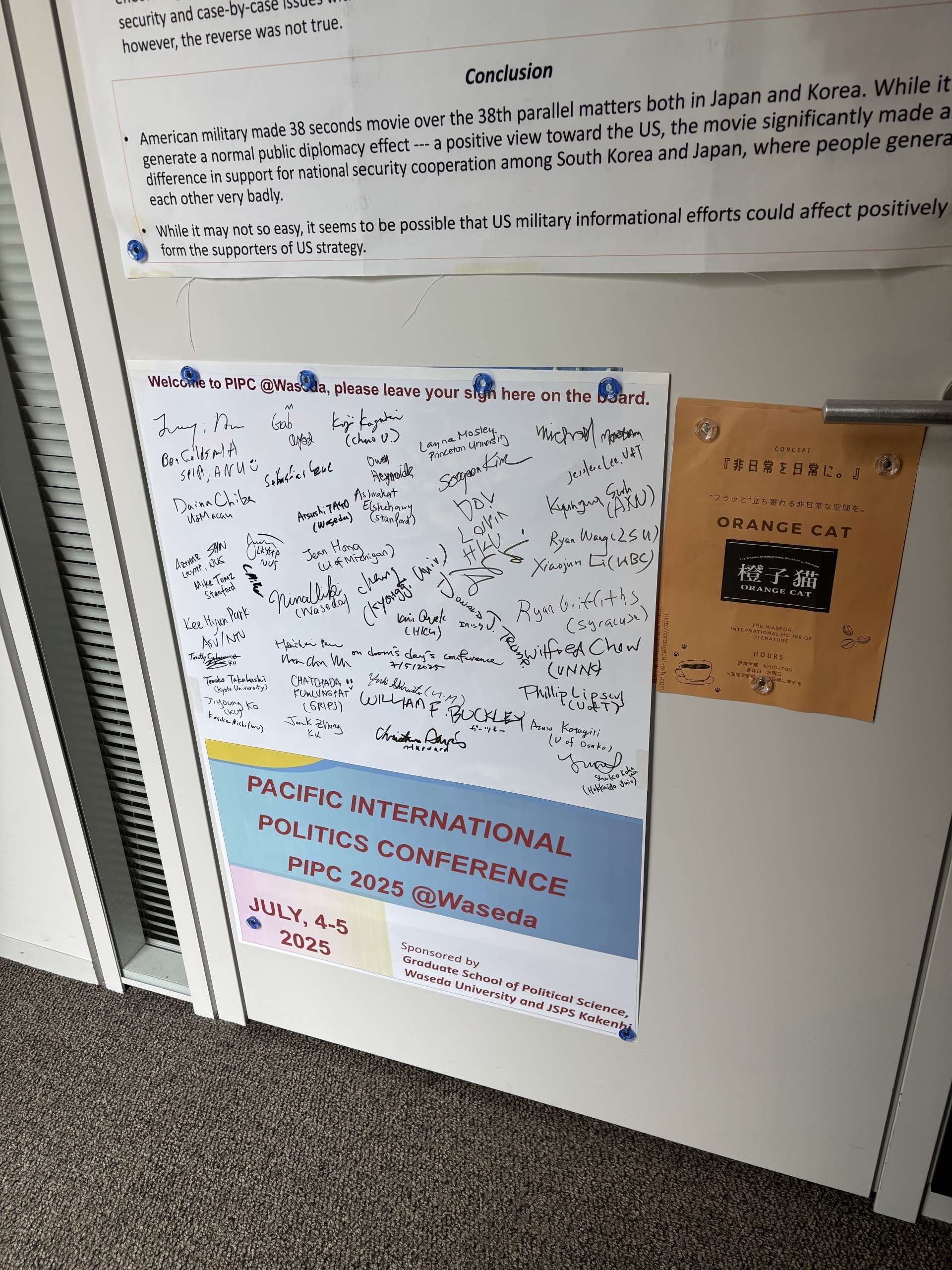
A poster signed by attendees
At 4 PM, everyone came together for brief final remarks and farewells. But the day—and the conference—didn’t end there. As a fitting finale, delegates were treated to a private hour at Waseda’s Haruki Murakami Library, complete with café access for networking. This blend of scholarship and camaraderie has long defined the PIPC spirit, and this year, it found a new home in the halls of Waseda University. Hosting the seventh edition of the conference marked a significant milestone, not just for the event itself, but for Waseda’s growing role as an international hub for cutting-edge research in International Relations.
For those of us in the Waseda community, the experience felt especially meaningful. As a Waseda student attending the event, it was both humbling and exciting to see our campus become a gathering place for so many big names in the IR field. But what stood out was how approachable and encouraging everyone was, especially during discussions and Q&As. The whole atmosphere made it clear that academic conversations about international relations aren’t just for senior scholars—they’re for all of us, because in one way or another, international relations ultimately shape the world we live in.
This article was written by the following Student Contributor:
Joanna Ligon
Graduate School of International Culture and Communication Studies


